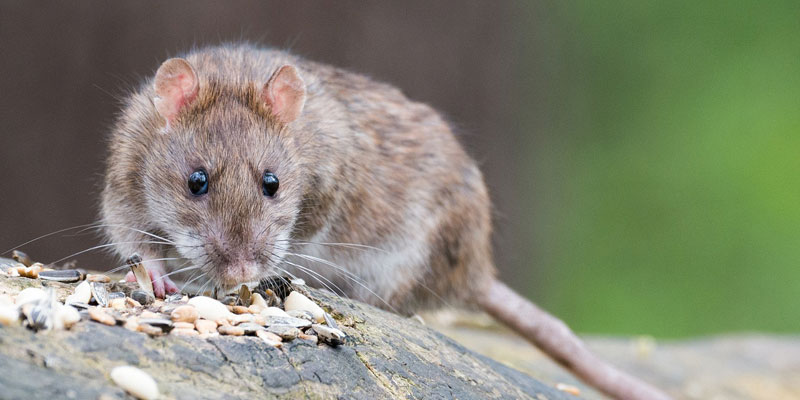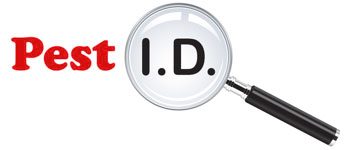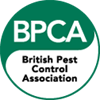
Rat Pest Control Services
Fast, Discreet, Efficient Rat Removal Throughout Essex & East London
Whether you have a rat problem in your home or business, an infestation can cause all manner of problems from damage to property through to deadly diseases – if you suspect your property has been invaded by rats then it’s vital to act fast and have them removed to avoid them multiplying and compounding the problem.
At Pest ID we are BPCA members and CEPA certified, and our friendly, professional pest control technicians are able to offer a quick & efficient rat removal service throughout Essex & East London, utilising a variety of methods to ensure your property is completely rid of these pesky rodents. Give us a call today to discuss your rat removal requirements!
Call now on 0800 955 0003

How to identify a rat problem
There are a number of early signs that your property may have a rat infestation – you may spot a casual intruder in your home, but there are several signs that they may already be nested in your home or business.
- Noises
A scratching sound or the scurrying of tiny feet in the loft or wall cavities are a classic sign of a rat infestation – these can feel surprisingly loud in the dead of night, but fear not… It is very rare for rats to break into the main house! - Droppings
You may notice brown/dark brown droppings – these are normally concentrated in a specific area and will be a spindle shape with tapered ends, around 2-3 times larger than a grain of rice. These will usually be found in the loft space, under floorboards or near a food source. If fresh, the droppings may be soft.
SAFETY NOTE – It is essential to wear protective gloves when investigating droppings as the bacteria in rat urine can infect you with the potentially fatal leptospirosis! - Damage to Property
Rats’ front teeth never stop growing, so they have to gnaw on hard surfaces in order to wear them down – look for twin tiny teeth marks around the edges of damaged items, particularly wood and plastics. You may notice evidence of damage to garden decking and outbuildings, as well as in loft spaces, under stairs and under kitchen units within the house. Rats will chew on pretty much anything so look out for damaged cables and plastic water/waste pipes, and be particularly careful of damaged electrical cables that can be dangerous and potentially expensive to repair/replace. - Rat Burrows/Footprints & Markings
Tell tale holes of around 6-9cm in diameter around fences and buildings could well be part of a complex system of tunnels rats will use for nesting, food storage and shelter – worn down tracks around them suggest it’s a well-used rat run. In lofts/attics you may see holes in insulation, often with nearby droppings. If you see cobwebs within these holes then it’s unlikely the rats have been using that particular run. Look out for small footprints and tail swipe marks in dusty areas. Rats secrete a dark oil from their fur, and as they tend to use the same routes regularly around the edges of a room, you may see grease smear marks to indicate that they use that particular run a lot. - Smell
Rat urine has a strong ammonia-like smell that people often describe as a “putrid, sweet smell”. This is usually noticed in loft spaces, under floorboards, under kitchen units and sometimes even in an airing cupboard.
Common rat problem locations
Rats may be nesting inside or outside your property – the most common areas you may notice signs of a rat infestation are:
- Outside
- Under decking
- Compost heaps
- Overgrown shrubs
- Junk
- Log piles
- Ditches & ponds (if you keep chickens or ducks, it’s very rare not to have rats nearby!)
- Inside
- Loft/attic spaces
- Under floorboards
- Under stairs
- Under kitchen cupboards
Causes of a rat infestation
Rats need 3 things in order to thrive – removing even 1 of these may be enough to see the rats relocating, however often further professional intervention is needed.
- Food Source
Feeding birds may attract rats, as well as bings, compost heaps and growing fruit & veg in the garden can be a great source of food. Once in a property, rats will often pick up food morsels left around the kitchen (including cat/dog food left out for your pets) by heading under kitchen units. - Water
Whilst mice get all the moisture they need from food, rats require an actual water source to drink from – ponds and standing water in the garden are great sources of hydration for them. In the house, they may use water tanks, toilets or they may even chew through waste pipes. - Harbourage
Rats require a place to shelter, where they can feel safe – they are naturally cautious with fear being one of their overriding senses, so somewhere quiet and free from predators (not far from food/water) is ideal.
What are the risks/issues if a rat problem is left untreated?
Once rats have found a place to stay that meets their 3 main requirements (above), it is rare for them to move on without intervention (either through extermination or cutting off 1 of their requirements). What’s worse, they breed at an alarming rate (putting rabbits to shame!) – a litter can produce 5-13 pups and from just 9 weeks old, females can produce up to 6 litters per year… If the conditions are correct then a rat colony could expand to 1,200 within just one year! The potential issues caused by a rat infestation are numerous, and include:
- Health
Rats can cause a whole host of health issues, the most worrying of which being Weil’s Disease (Leptospirosis), Salmonella, Listeria, Toxoplasma Gondii and Hantavirus. - Smell
In addition to their strong-smelling urine, if a rat dies in a space that is unreachable then the carcass can cause a terrible odour, leading some people to move out of their properties until the smell goes away (which can take weeks, only quickened by a plague of bluebottle flies devouring the carcass!). - Further Damage
If your rat infestation is in your loft or attic, there is significant risk of damage to any clothes or possessions (often including family heirlooms or old photos) stored up there, and to electrical equipment, cabling or water pipes. Damage caused by fires when shorting electrical cables or where rats have chewed through water pipes in a bathroom can cost tens of thousands of pounds, and even cause danger to lives. For commercial properties the damage to equipment can be disastrous, so it’s imperative to choose an accredited company that is able to carry out the job to the required standard. - Further Pests
An untreated rat problem can bring about further intruders such as flies, maggots and fleas. - Damage to Commercial Reputation / Social Embarrassment
For commercial properties, particularly in the hospitality industry, the sighting of a rat or signs of the presence of rats can be extremely damaging to your reputation – photos or poor reviews can find their way onto social media and even into the press and review sites, so a swift response if you suspect you may have a rat problem is incredibly important. Even for a domestic rat problem, since rats are considered “dirty” they could cause some level of social embarrassment… Best to get them dealt with as soon as you notice the above signs!
Can I treat a rat problem myself?
In short… Possible, but likely not.
Whilst there are amateur DIY products available on the market to treat a rat infestation yourself, a lot of rodenticides may not kill off the entire colony and any survivors can become partially resistant.
Furthermore, since rats are both clever and neophobic, if they witness other rats being killed or harmed in a trap or if they associate poison with death then they can become “trap shy” or “bait shy”, leading to them avoiding baits of that formulation (thus making them even harder to self-treat). There are certain areas of the UK in which certain active ingredients will simply not work (we send off rat tails to laboratories for resistance testing) – if this is the case in your area then you are just feeding the rats!
Professional rat exterminators use products that only licensed pest controllers are able to buy/use – we are professionally trained to think as a rat would think, allowing us to clear up rat problems much quicker and more efficiently than any DIY method.
Why choose Pest ID for your Rat Removal Services?
As a local rat removal and pest control company servicing areas within Essex & East London including Colchester, Maldon, Witham, Chelmsford, Southend, Basildon, Wickford and Romford, we are both small enough to care and large enough to matter. Unlike many “one man band” rat exterminators, we have a full team of friendly pest control technicians and can provide several technicians to a single job if necessary.
We are full BPCA members and trained to RSPH levels, with CEPA Certification (aka EN 16636) which means we are audited to the very highest standards of pest control. All our staff are registered for CPD (Continued Professional Development) and we only use the best products available. We have a flawless 5 star rating on Google Reviews and a 9.96/10 on Checkatrade from over 300 happy customers and we genuinely care about our customers, meaning we provide the best possible levels of customer service.
Rat removal costs
All rat infestations are different and may require varying methods of eradication, but our Essex & East London rat pest control costs are extremely competitive (FAR cheaper than the larger, national pest control companies), and we aim to have your infestation sorted within 14 days. Just give us a call for a free telephone consultation and we can scope out your requirements and give you a cost.
Our rat removal process
The first step will be a telephone consultation during which we will gather as much information as possible about your specific rat problem – we will then conduct a survey comprising the following:
- Why are rats entering the property?
- How are they getting in?
- What steps will need to be taken to prevent re-infestation?
- What is the quickest and most efficient way of killing off the problem that will keep occupants, children, pets and any non-target species as safe as possible?
After the survey we will commence treatment and send out a report detailing:
- Initial survey findings
- Products used
- Health & Safety info relating to the treatment
- Next steps and what is likely to happen
- Any relevant photos included
We will normally schedule a follow up visit 14 days after the initial treatment – if the problem isn’t resolved after the second visit then a third will be scheduled. Once the infestation is eradicated there should be no requirement for aftercare, however if you do have any questions or concerns then you can always give us a call for some free advice!







